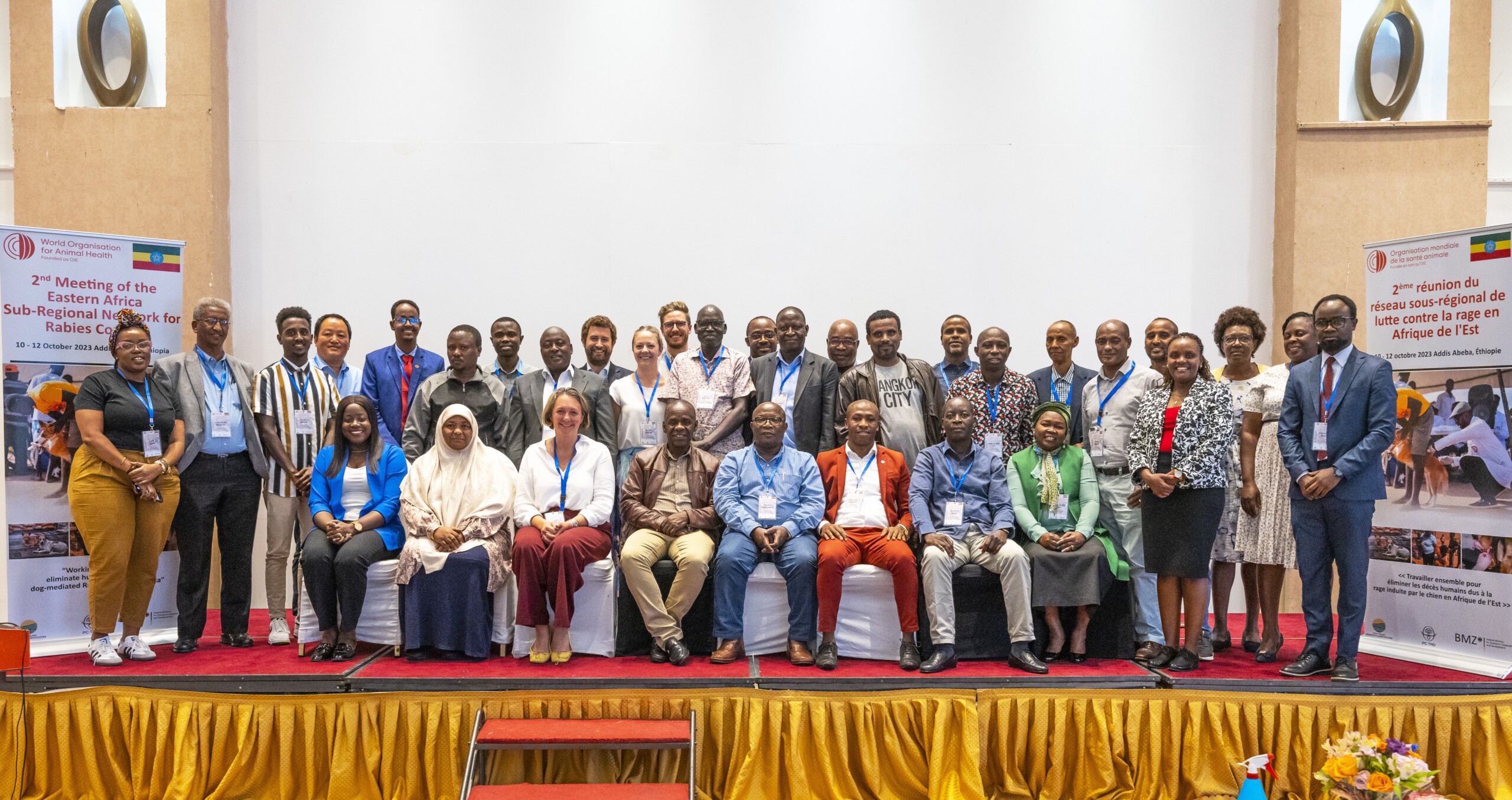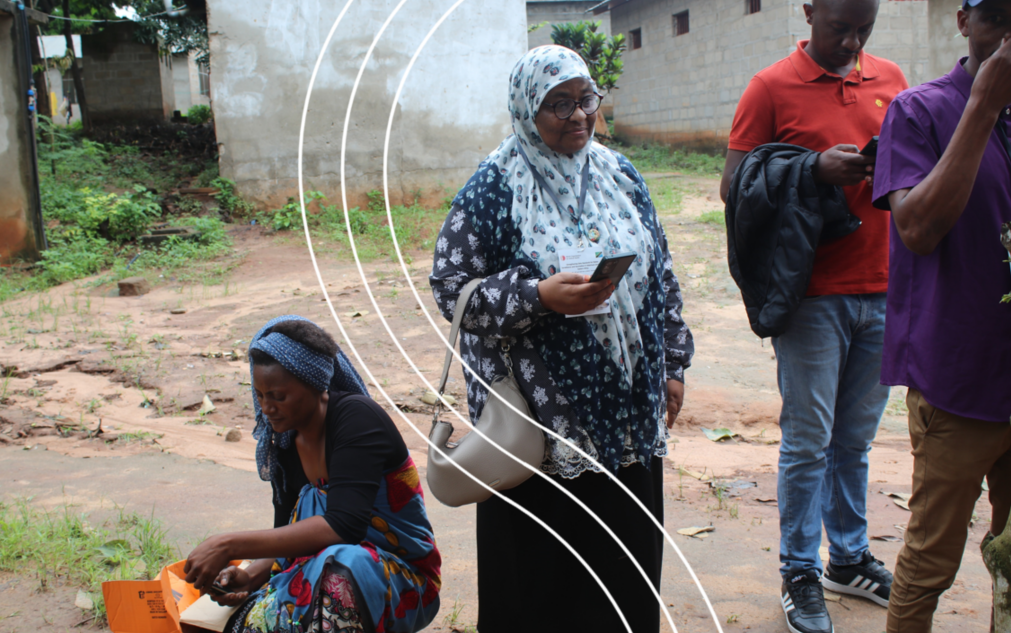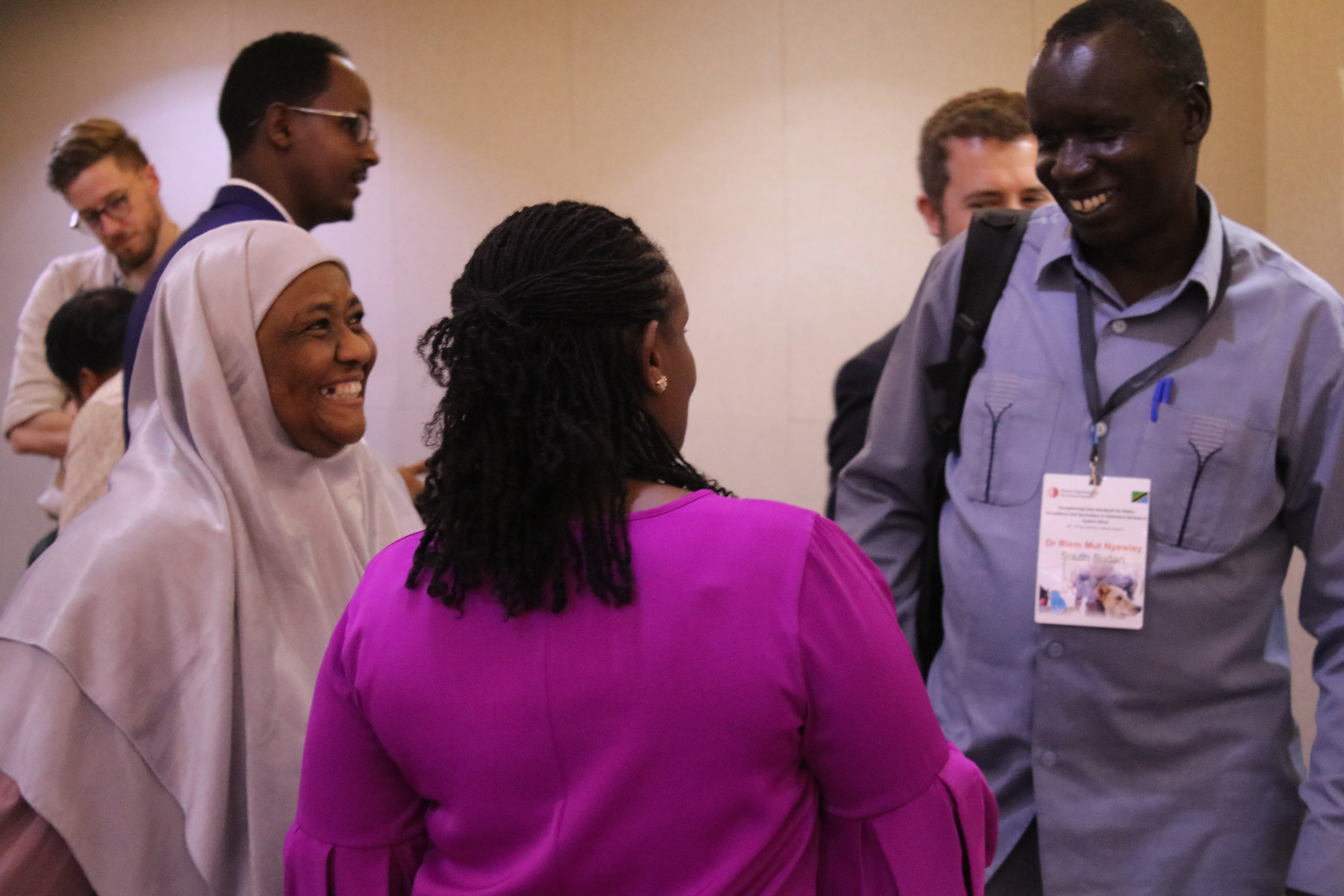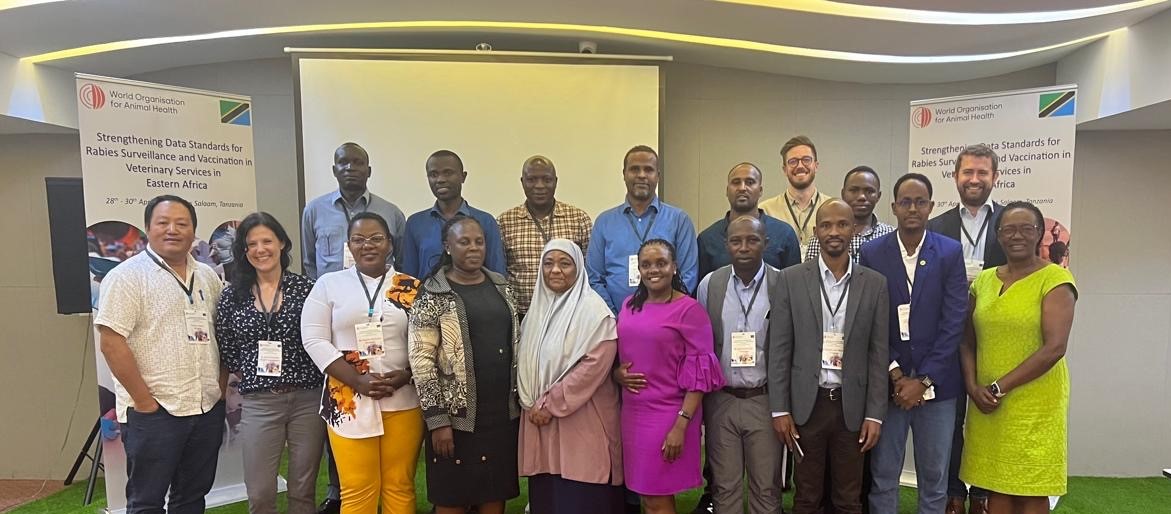
Globally, the elimination of human deaths from dog-mediated rabies by the year 2030 is still targeted. Yet, rabies remains a significant health threat at the animal-human interface across the Africa region. Many countries in Africa rank rabies as a priority disease, with more than 90% of human cases being transmitted through dog bites. Therefore, mass dog vaccination for rabies by veterinary professionals remains the major intervention to break the transmission cycle of rabies from dogs to humans.
Veterinary professionals from across Eastern Africa gathered in Dar es Salaam, Tanzania, for a three-day technical training workshop focused on strengthening data standards for rabies surveillance and vaccination. The event, organized by the WOAH Sub-Regional Representation for Eastern Africa, was aimed at fostering capacity of countries in Eastern Africa to measure national progress towards the global goal of zero human deaths from dog-mediated rabies by 2030, and to support data-driven decisions in implementation of their national programmes.
The workshop aimed to implement the recommendations of the 2nd Eastern Africa Sub-Regional Network for Rabies Control meeting, held in Addis Ababa in 2023, which identified fragmented data systems, paper-based reporting, and limited intersectoral data sharing, amongst the challenges experienced by Member Countries. WOAH therefore convened this training workshop, with support from the Global Alliance for Rabies Control (GARC) and Mission Rabies, to equip national rabies contact persons with the tools and skills to improve data collection, quality, and analysis through use of digital platforms.
The training workshop brought together 11 countries from the Eastern Africa region including Burundi, Comoros, Djibouti, Ethiopia, Kenya, Rwanda, Somalia, South Sudan, Sudan, Tanzania and Uganda. The workshop provided an environment for cross-learning through sharing country-specific experiences. Notable is Tanzania’s experience on the process of applying for WOAH’s endorsement for its national rabies control programme, which inspired others to consider similar paths.
Participants engaged in hands-on training using two powerful mobile applications — the GARC App and the WVS Data Collection App — designed to record and visualize data related to mass dog vaccination and rabies surveillance. Facilitated by experts from the Global Alliance for Rabies Control (GARC) and Mission Rabies, the sessions emphasised practical application, including mock exercises to simulate real-time data data collection.
With support from the Chief Veterinary Officer and WOAH Delegate of Tanzania, Dr Benezeth Malinda, the veterinary department of Kisarawe District and local authorities, a field exercise in Kibaoni and Minaki villages allowed participants to practice data capture during an actual dog vaccination campaign. Over 2,200 doses of rabies vaccine were administered and vaccinated dogs were marked to enable assessment of vaccination coverage. Through this exercise, and subsequent demonstration of data analysis, the national participants appreciated how digital tools can transform field operations and improve monitoring of mass dog vaccination campaigns against rabies.
Participants also engaged in a plenary discussion of barriers and opportunities for collecting quality and timely data for rabies. Discussions revolved around addressing barriers to share rabies data between veterinary and public health sectors, and integration of data collected with mobile apps into national health databases. The workshop created space for open dialogue on data ownership, privacy, and technical needs, fostering trust and transparency.
This workshop provided opportunities for veterinary professions leading rabies vaccination campaigns and surveillance to strengthen data standards in respective countries. Marked by collaboration, innovation, and practical training, the workshop sets a strong precedent for future regional initiatives.



